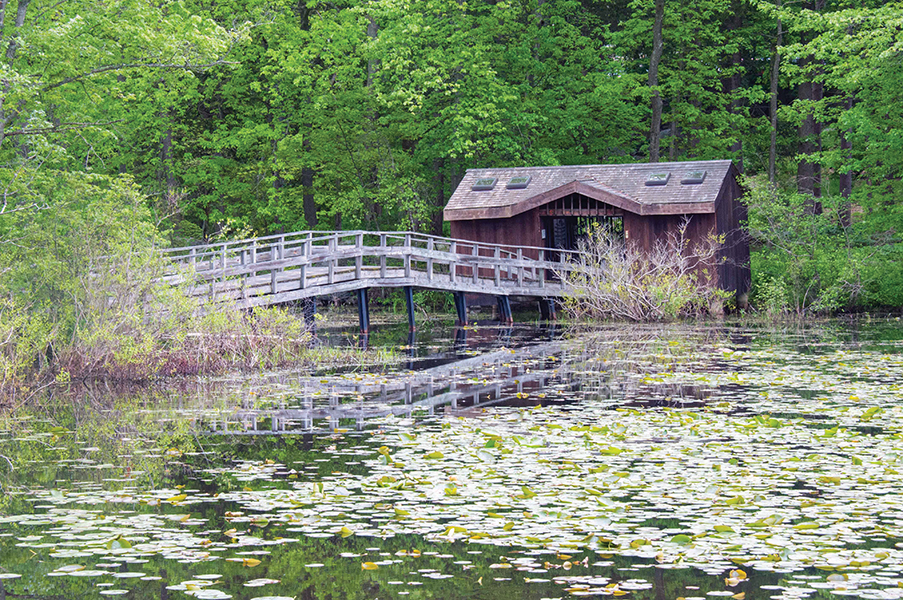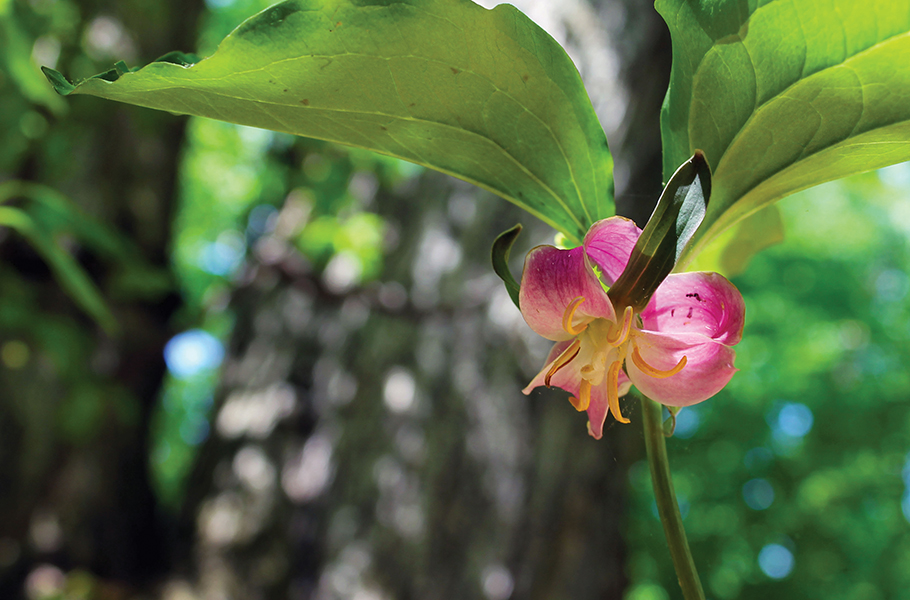In Ossining, a small island is home to one of Westchester County’s most diverse wildflower habitats.
The island’s very creation was unintentional, but has allowed “a treasure chest of floral jewels” to thrive in isolation.
Wildflower Island — a 2-acre island within the Teatown Lake Reservation Nature Preserve — is home to more than 230 wildflower species, reachable by a wooden bridge from the nature center.
Protected from many of the ecological challenges on the Teatown “mainland,” the small preserve-within-a-preserve offers a view of the “the forest that once was,” as Teatown describes it.

The island is part of a 1,000-acre preserve overseen by Teatown, the largest privately owned preserve in Westchester County. Teatown’s 15 miles of trails attracted 10,000 visitors last year, while its educational programs reach an estimated 20,000 adults and children each year.
Wildflower Island is a more exclusive part of Teatown. It’s open only for guided tours on weekends between April and September, or through “Open Gate” days in the spring and summer.
The origins of the island, and Teatown itself, date from 1923. Gerard Swope Sr., the chairman of General Electric, purchased a large wooded estate in Ossining that year, known at the time as “The Croft.” He and his family built a network of horse trails there that today guide hikers along the property.
A year after his purchase, Swope Sr. dammed a brook running through the property and flooded a low-lying meadow, creating a 42-acre body of water known as Teatown Lake.
But not all of the meadow was low-lying. The points of two small, stubborn knolls stuck above the waterline after the flooding to create Goose and Wildflower islands within the new lake.
Wildflower, the bigger of the two islands, is just about 100 feet from the reserve’s mainland. While Goose Island has been mostly left as is, Wildflower Island had clear potential as a place for learning and appreciating nature, according to Phyllis Bock, director of education for Teatown.
“They discovered the wildflowers there and decided, because it’s such a remarkable area, they could preserve it and use it for education about why stewardship is important,” Bock says.
It wasn’t until 1970 that the island’s wildflower wonders were actually found. Warren Balgooyen, Teatown’s first naturalist, paddled a canoe out to the island and discovered what Teatown describes in its official history as “a treasure chest of floral jewels.”
The island’s flowers were cultivated by Balgooyen and Marjorie Swope, Gerard Sr.’s daughter-in-law. Jane Darby became the first Wildflower Island curator.
The land was operated at the time by the Brooklyn Botanic Garden, the organization that heirs of Gerard Swope tasked with creating an outreach and conservation center. In 1971, Teatown was officially established as an independent nature preserve with a board of 21 community members.

Since the island’s discovery, Teatown naturalists have added other types of wildflowers to the island, focusing on species native to the Northeast and Appalachian region.
The island’s seclusion helps it maintain that diversity of species. Wildflower species in Teatown’s main woodlands suffer from deer browsing, invasive species and other disturbances. With a water and fence barrier, Wildflower Island keeps away deer and is less susceptible to invasive species.
Bock says Teatown’s staff maintains the island by trimming trails and monitoring the growth of any invasives. This winter, heavy storms knocked out several trees, requiring more spring maintenance than usual, according to Bock.
Staff at Teatown opened up the island for the first Open Gate day April 14 to a crowd of more than 100. It will be open for tours, by reservation, every Saturday and Sunday through September.
Bock has worked at Teatown for more than 25 years, starting as a volunteer before joining the full-time staff. Asked about her favorite time to visit the island, Bock says you can’t go wrong in early May, when wildflowers such as lady slippers, shooting stars and wild columbines are all in bloom.
“It really starts popping around Mother’s Day with different flowers coming out,” she adds. “But I think my favorite time of year is toward the end of summer. We get the last blooming flowers coming in, things like ironweed, cardinal flower.”
Wildlower Island volunteers post a “Bloomlist” weekly on Teatown’s website to keep track of what’s new on the island.
“There are blooms throughout the season, so it’s nice to see all the different times of year,” Bock says. “Even when there’s hardly anything blooming, it offers a different look at Teatown.”
On May 11 and 12, Teatown hosts its annual Plantfest, a celebration of spring that serves as a plant sale and fundraiser for the nonprofit. The event will include a mix of vendors, food, music and tours of Wildflower Island. For more, visit teatown.org.




